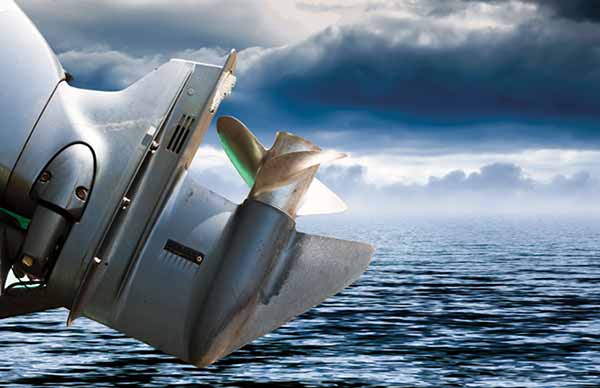If you want to know Can Any Boat Motor Go In Saltwater, the answer is Yes, But you will need maintenance of the boat motor is a common measure.
Due to the many hours at sea, salt deposits, the constant contact with saltwater and sun, your engine needs careful and continuous care.
We offer you a list of maintenance instructions that you should go through after each sailing trip and instructions on how to prepare your boat motor in saltwater.
Can Any Boat Motor Go In Saltwater?
The boat engine is the most sensitive part of the boat. If it breaks down in the middle of the sea, you can quickly find yourself in a very uncomfortable, if not dangerous, situation.
An engine that is not well cared for can have a faulty operation, such as excessive fuel consumption, leaks, unpleasant smells, or problems when starting.
To avoid such engine damage and the destruction of the boat motor, regular maintenance is necessary and very advisable after every excursion and during the winter.
Can any boat motor go in salt water? Yes, but need following maintenance measures are highly recommended after every boat trip: run the engine in fresh water, and oil, and flush it.
The best way to make sure your engine is working is to have it overhauled each season. Skillful craftsmen among you can also carry out the maintenance yourself.
Essential Saltwater Boat Maintenance After Any Boat Motor Goes In Saltwater?
After each trip, you need to clean the outboard boat motors and inbound motors, read carefully and follow all the procedures carefully step by step for a boat in saltwater.
For Outboard Motors
Flush the entire boat engine (without removing the engine cover). Either use an outboard flusher or put the motor in a container with fresh water.
Start your boat motor and let it run for at least a quarter of an hour to flush out the salt. For safety reasons, leave it idle so that the propeller does not start, and keep your distance from the propeller for your safety.
In the meantime, you can check the water pump by making sure that the water circulation is working properly.
The water should flow regularly and abundantly and be cold or at most lukewarm. If the water is warm and the flow rate is rather low, switch off your engine immediately to avoid major damage.
Disconnect the fuel hose while the engine is running. Keep the engine running to burn the petrol left in the carburetor.
The engine will stop automatically when all of the fuel in the carburetor is burned. It has the advantage that no deposits are left behind that could impair the engine start next time (never accelerate during this phase. Otherwise, you could damage the seals).
If the engine stops, turn it off.
Remove the engine cover and check that there are no fuel or water leaks.
Check the oil level if you have an auto-lobe engine.
Then clean your boat engine with a cleaning rag and oil it (anti-corrosion oil WD 40 recommends), paying special attention to the electrical and moving parts.
For Inboard Motors – Saltwater Boat Maintenance
Overall, the rules are the same as for Can any boat motor go in salt water.
Let your boat engine run in freshwater, oil the moving parts, and check the engine’s individual components step by step:
- Condition of the V-belts
- Impermeability of the cooling circuit
- Detection of possible leaks
- Checking the liquid level
Boat Motor Go In Saltwater On Winter
If the engine is to do its work in saltwater in the future, make sure that it is approved accordingly; otherwise, the factory warranty will expire.
While some manufacturers offer special saltwater models, not all of them approve their engines for operation in salt water.
For outboard motors
Read the manufacturer’s maintenance instructions to find out if you need to follow any specific instructions.
First, carry out the basic maintenance for every outboard motor after every sea journey and let it run longer.
Check the spark plugs. Put a drop of oil in every cylinder, then operate the engine by hand without starting it.
The oil protects the cylinders from corrosion during winter. White exhaust smoke in the first quarter of an hour at the next start is normal.
Take out the gasoline filter and water separator and check their condition. If in doubt, replace it.
Change the impeller of the water pump (see below) and empty the rear-wheel drive.
Checking and Replacing The Impeller – Saltwater Boat Maintenance
To check and replace the impeller on your outboard, follow these steps:
Step 1: Unscrew the underwater part.
Have your wrench and Allen key at hand. On some models, you have to unscrew the gearbox’s control rod; on others, it is a PTO stub. Then unscrew the remaining screws of the housing.
Step 2: Drain the gear oil.
Collect the old oil in a container. First, open the lower and then the upper drain plug.
Step 3: Disassemble the pump housing.
To do this, loosen the screws and lift off the pump housing with the impeller.
Step 4: Check the condition of the impeller and pump housing
Check to see if the impeller is damaged or showing signs of cracking. If in doubt, replace the impeller. Make sure that the pump housing is not damaged and clean it very carefully.
Step 5: Reassembly
Oil the pump housing and install the impeller.
Then put the pump housing back on the driveshaft. To do this, hold the driveshaft and turn it clockwise so that the impeller and the pump housing engage properly.
Use a brush to apply boat grease to the upper part of the driveshaft and the gearbox.
Top up oil by pouring the appropriate oil through the bottom opening and leaving the top screw open until the oil runs out of the top hole. Then you can close the upper and lower screw again.
Attach the gearbox to the motor in the same way as you removed it.
Step 6: Review
When the impeller has been replaced, and the motor completely reassembles, test its operability.
Either uses an outboard flusher or place the boat engine in a freshwater container and watch the water spout to see if your engine is working properly.
Check the anode: clean it and, if necessary, replace the anode.
Remove the propeller by blocking it with a (wooden) wedge. Check its condition and clean the propeller shaft before applying fresh boat grease. You can then put the propeller back on.
Examine the condition of the thermostat. It is responsible for regulating the engine temperature. For inspection, put it in a container with water after removal and heat it.
The thermostat opens as soon as the correct temperature is reached. After the thermostat has opened, use pliers to remove it so as not to burn yourself. Put it in cold water; it should close again.
For Inboard Engines
Read the maintenance instructions provided by the manufacturer to find out if you need to follow any specific instructions.
Let your boat engine idle in freshwater and flush the engine:
Either by pulling the saltwater inlet pipe from the sea valve or filter outlet (when you are on the water, close the butterfly valve).
Place the inlet hose for the saltwater in a large bucket into which freshwater flows through a garden hose.
Or with the help of an inboard flusher on the underwater part.
Let the engine run for at least 40 minutes to remove all debris from the piping. Take the opportunity to check the tightness of the fuel system, the cooling circuit, and the lubrication system.
Then inject an antifreeze into the engine. To do this, take the water supply hose out of the bucket and place it in an antifreeze canister to penetrate the entire motor circuit (stop your engine before the canister is empty).
In spring, you will need to rinse your engine with fresh water to drain most of the antifreeze through the exhaust.
- Clean the engine water circuit: engine block, pipe bends, manifold, and heat exchanger.
- Drain the engine oil, fill in new and suitable machine oil, and change the oil filter.
- Replace the impeller, spark plugs, and ignition breakers.
- Check and change the gear oil if necessary. Also, check the tension and wear of the V-belts.
- Flush the motor, wipe it with a cleaning cloth, and protect the moving parts (cable outlet) with the anti-corrosion oil WD 40. Don’t forget to grease the cordon shafts.
- Check the propeller and oil the propeller shaft.
- Before you start your engine again at the beginning of the new season, check your hoses, seals, fuel connections, and the condition of your bolts and screws.
Conclusion
Can any boat motor go in saltwater, yes but sometimes want both variants. It can also be observed on some boats, since anglers want both disadvantages and install both.
It always depends on whether you need a stern motor for longer distances or certain types of fishing. With both electric motors, you are more flexible and can pursue your hobby with a lot of fun.
Whether the fresh or saltwater electric motor is, of course, obvious, it depends on the water in which you are traveling.
You have to keep the above detail about saltwater: Saltwater is much more aggressive when it comes to corrosion.
Therefore, you should make sure that the electric motor is also designed for saltwater. Please read the above-mentioned tips and guidance.

